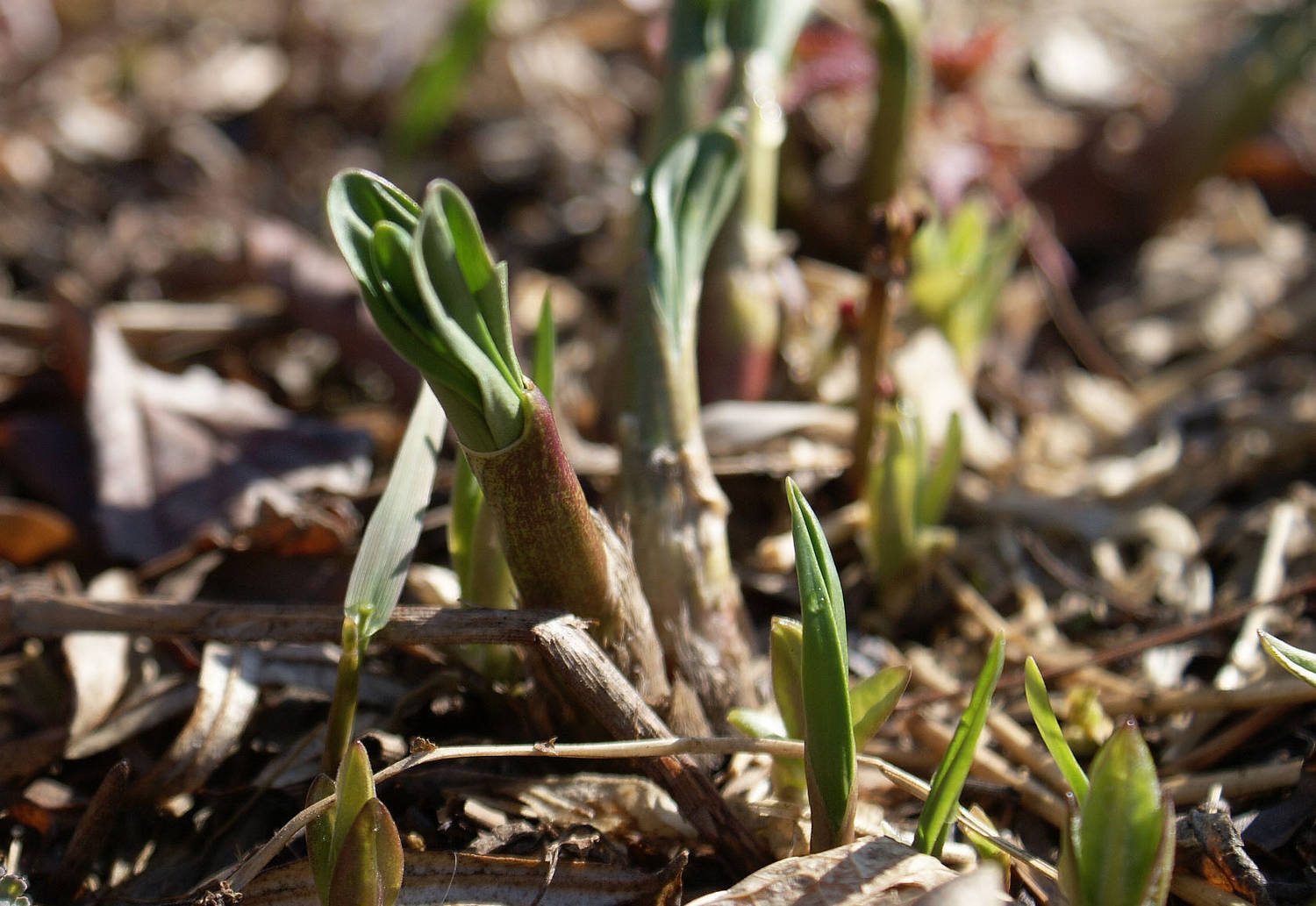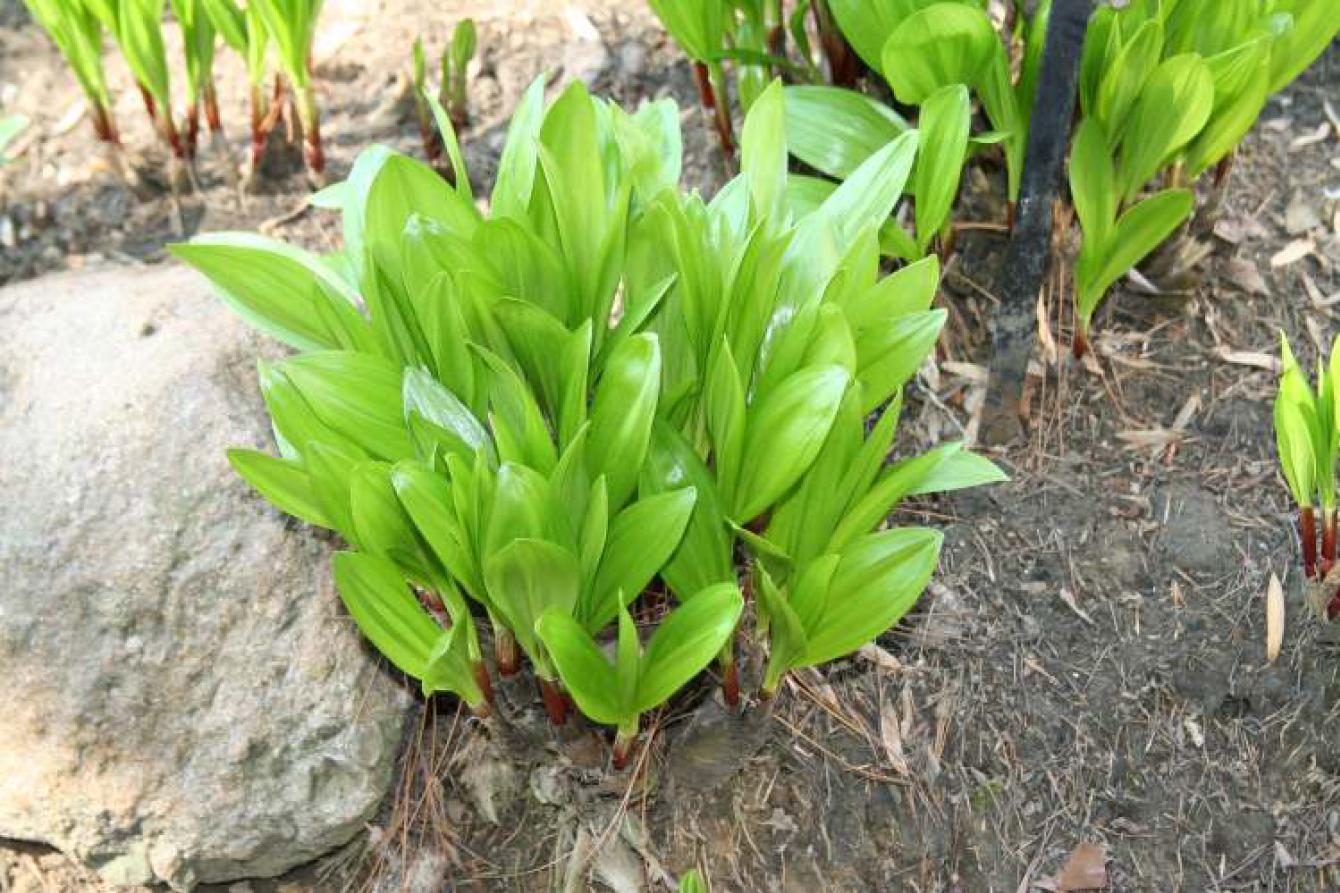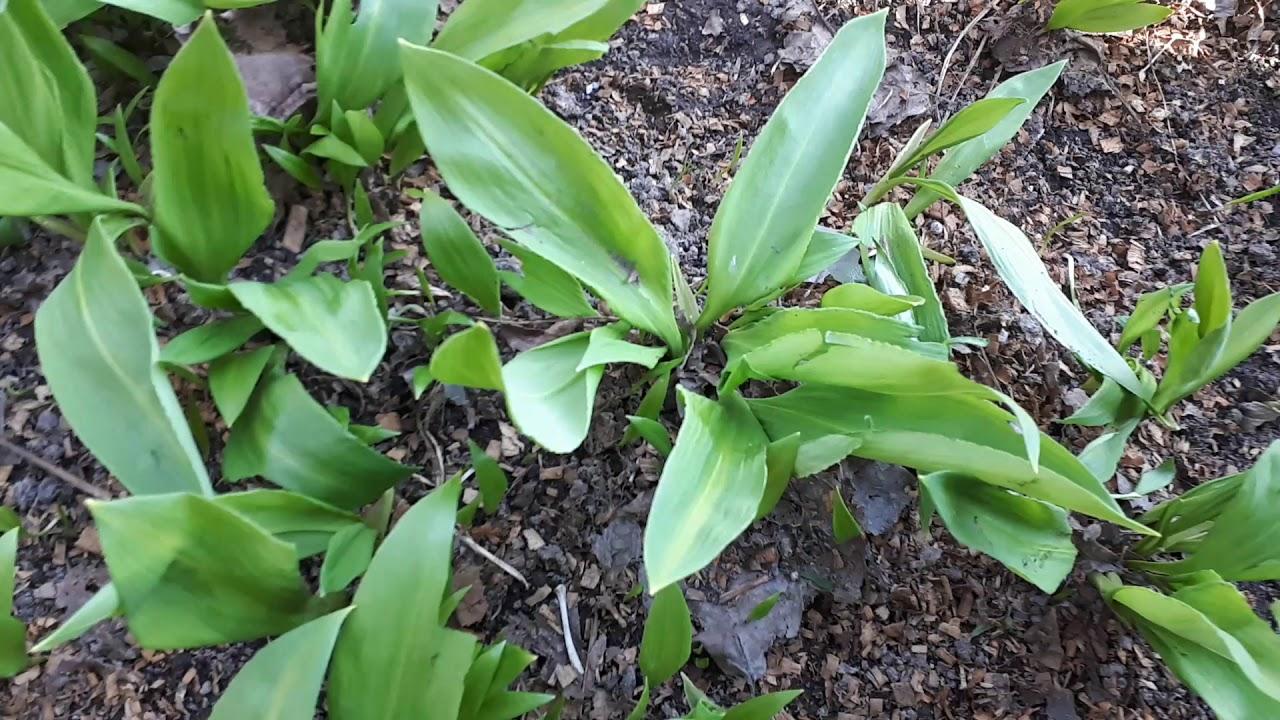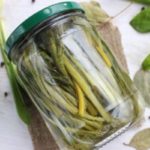Ramson is a perennial herbaceous plant that is popular with many people. This culture has light green leaves, which have a pleasant garlicky taste and bring great benefits to the body. Ramson is most often found in shady deciduous forests, in low places and ravines. Its growth area is very wide. At the same time, many are interested in the peculiarities of growing and caring for wild garlic, as well as its beneficial properties and preparation.
Description and features
This perennial plant belongs to the Amaryllis family and the Allium genus. It is characterized by a small elongated bulb, which does not exceed 1.5 centimeters in diameter. The green leaves have an oval-elongated shape and grow from the stem in pairs. Moreover, their dimensions are 5-7 centimeters in length.
The flowering of the crop begins with the stem throwing out an umbrella-shaped inflorescence. Its dimensions are 13-15 centimeters. After flowering ends, fruits appear on the bushes in the form of a seed box. They contain round seeds.
The plant belongs to the ephemeroid category. Their terrestrial part begins to develop in early spring, and completely dies off in summer. It is recommended to start collecting wild garlic before flowering, since its leaves become coarser with age. Therefore, the first greenery should be picked in April-May.
Shattered wild garlic seeds germinate only after a year. However, the crop can also propagate vegetatively. If you want to plant wild garlic in your garden, you should dig up wild bulbs and plant them on your plot.
Ramson is often called bear onion. This is due to the fact that the plant is often consumed by bears after hibernation. They eat both the ground part and the bulbs to replenish their depleted reserves of vitamins and microelements.
Popular varieties
The most popular varieties of wild garlic include the following:
- Bear's ear - characterized by its small size and high yield. The culture is characterized by wide, succulent leaves. The plant is resistant to fungal infections. However, sometimes the crop suffers from putrefactive diseases of the bulbs, which lead to its death. The Bear's Ear variety produces up to 2 kilograms of fresh greens per 1 square meter of plot.
- Bear cub - distinguished by longer leaves and larger sizes. At the ripening stage, the crop reaches a height of 35-45 centimeters. The length of the leaves is 8-25 centimeters. This variety of wild garlic is characterized by average yield. With proper care, you can get up to 1.5 kilograms of greenery from 1 square meter of land.
- The bear delicacy is a medium-sized crop that has high productivity. The leaves reach a length of 15 centimeters. At the same time, the height of the crop does not exceed 20-30 centimeters. From 1 square meter you can get up to 2 kilograms of fresh herbs.
Recommendations for cultivation
It is recommended to plant wild garlic in the fall. In more rare cases, this is done in the spring season. Sprouts from seeds appear only after 1-1.5 years. It is best to sow them in August-October.
Bulbs are best suited for autumn planting. In order for the plant to develop normally, it is important to provide it with favorable conditions:
- Greens grow well in the shade. Therefore, it is recommended to plant wild garlic along fences, buildings or trees. It is best to do this from the east or north side. Planting near trees is considered especially successful. The fact is that many insects flock to the fragrant wild garlic flowers, which will participate in the pollination process.
- Ramson can also be planted near beds with tomatoes. The garlicky smell of the plant will help repel parasites and protect tomatoes from late blight.
- Stagnation of water is very dangerous for wild garlic. Therefore, groundwater must lie deep enough.
- If the area does flood, drainage must be provided. It should consist of crushed stone, pebbles and sand.
- Ramson can grow in one place for several years. Therefore, you need to feed the area with peat, compost or humus in advance.It is important that the soil is light and loose.
- After winter, the mulch that was scattered at the planting site needs to be scattered. Ramson can withstand slight spring frosts.
- The first flowers that appear on the stems in spring need to be picked off. The procedure gives the plant strength and strengthens it.
- Ramson reaches adulthood only in the fourth year of life. From that moment on, you should start collecting spicy herbs.
If the crop is planted correctly, seeds can be collected from the plant. This will help increase the area under crops.
How to properly care
Caring for wild garlic is easy. To do this, consider the following:
- Maintain constant moderate soil moisture. It is necessary to water the plantings when the soil begins to dry out. At the same time, the number of waterings during dormancy, which occurs from July to September, is reduced.
- Be sure to mulch the beds with the plant. This will help retain moisture and warmth during frosty periods. It is permissible to use peat, straw, and old leaves as mulch. In spring, the shelter must be removed. It is important not to damage the delicate sprouts.
- Although the culture is not afraid of frost, it feels better at temperatures of +10 degrees and above. At the same time, extreme heat also negatively affects the plant.
- Apply fertilizer in autumn or early spring. For 1 square meter it is recommended to use 15 grams of ammonium nitrate, 40 grams of superphosphate, 20 grams of potassium salt. It is also permissible to use rotted manure.
- During the formation of shoots, use fertilizers based on phosphorus and potassium. This improves seed ripening and bulb formation.
- Clear the beds of weeds. In this case, it is not necessary to loosen the plantings.
Useful properties of the plant
Ramson is a very valuable crop that contains a large number of useful components. It contains vitamins B, C, A. The plant also contains folic acid, iodine, selenium, zinc, and fluorine.
Wild garlic is characterized by the following beneficial properties:
- Phytoncides help cope with pathogenic microbes and parasites. To do this, the plant bulbs are grated and the resulting pulp is wrapped in gauze. The compress can be applied to purulent wounds. It can also be used for lichen and mycoses. To eliminate a runny nose, you need to put gauze swabs with wild garlic pulp into your nose. For trichomonas colpitis, suppositories need to be inserted into the vagina 2 times a day - morning and evening.
- The high content of vitamin C in wild garlic helps strengthen the immune system during flu epidemics and other viral infections.
- The plant has a tonic effect on the human body. It helps cleanse the intestines of waste and toxins and improve the condition of the circulatory system. Wild garlic can cure joint diseases. For this purpose, its leaves are used in the form of compresses.
- It is useful to consume wild garlic during spring vitamin deficiency, when the body undergoes restructuring. If you consume 15 leaves of the plant daily, you will be able to cope with increased drowsiness, reduce blood pressure and eliminate intestinal dysfunction.
To improve your health, you can eat wild garlic leaves, stems and bulbs. Greens are used fresh. It can be eaten as a side dish or added to salads. Wild garlic can also be pickled and dried.
Is it possible to freeze
The plant is most useful when fresh.Heat treatment leads to the loss of most of the beneficial properties. Wild garlic leaves need to be washed, cut and added to the salad. However, it is important to consider that they have a pronounced garlic aroma, which can overpower the taste of other ingredients.
Cooking recipes
Ramson is often used for table purposes and used as a seasoning. This is due to the pronounced garlic aroma of the plant. Herbs can be added to first and second courses. It is put into the filling for pies. Greens can also be pickled and salted.
Quite often, wild garlic is used to prepare national dishes. In Caucasian cuisine, the leaves of the plant are used to prepare sauces and marinades for meat. The Germans make paste from greens, which is served with vegetables and meat. They also eat the spicy leaves fresh with bread.
Who should not eat wild garlic?
People with gastritis, stomach ulcers and intestinal inflammation should not eat such greens. Also, pregnant women should not use this product. It leads to increased tone and can cause heartburn. People with pancreatitis and cholecystitis should limit the amount of such greens in their diet.
The product is contraindicated for people who suffer from allergies or have an individual intolerance to this plant. It is important to consider that greens can increase stomach acidity. In addition, it is contraindicated for people with epilepsy. If consumed in excess, the product may cause digestive disorders and insomnia.
Ramson is a very valuable product that contains many vitamins and microelements. At the same time, growing the plant is not difficult. To get a rich harvest of greens, it is enough to follow simple rules of agricultural technology. To do this, you need to water and fertilize the plant.















